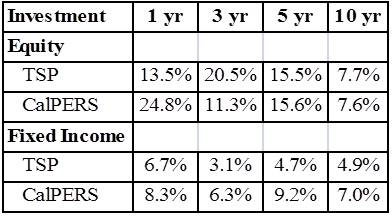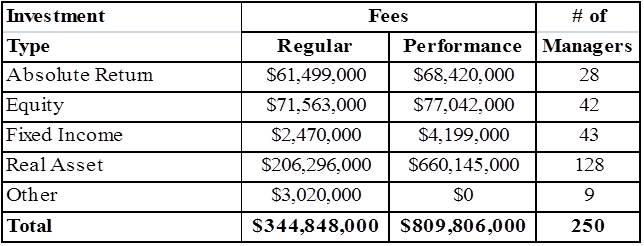Introduction
In the first part of this two part series, I explained how the pension investment industry worked and why pension holders should keep an eye on them. I pointed out:
- “Pensions” often get sold a bill of goods by companies wanting to manage their assets.
- The structure of the pension industry invites corruption.
I used the California Public Employees’ Retirement System (CalPERS), the second largest pension in the US, as the “poster child” for both problems. And in January 2015, its problems were highlighted when Alfred J.R. Villalobos (pictured above), a former CalPERS board member committed suicide. Villalobos faced trial on federal corruption and bribery charges for allegedly earning about $50 million as a middleman in winning CalPERS investments for private equity clients.
And sadly, Pensions and Investments (P&I) reports that CalPERS is again in the news for the wrong reasons. CalPERS reported it does not know how much it is paying private equity companies for performance. Before getting to this latest “problem”, some background on this pension investment giant is in order.
The CalPERS Investment Structure
CalPERS has investments of just over $300 billion, second only in size in the US to Federal Retirement Thrift (TSP), the Federal government workers’ pension.
Most pensions have investment committees that do all they can to avoid being held responsible for the performance of their investments. How is this done? Typically, it includes hiring a financial consultant to recommend financial institutions to make investments for the pension. This allows the pension committee to blame the consultant and the financial institutions they help pick for bad performance.
CalPERS uses this approach in a unique way. Its latest financial report indicates that in 2014, it hired 54 consulting firms at a cost of $21.7 million to help it choose investment managers. Table 1 details the costs and numbers of investment managers it hired with the consultants assisting. In total, it paid out $1.15 billion in fees to 250 investment managers who in turn decide what to invest in. Now, paying out this amount is quite reasonable when you are investing $303 billion (0.38%). However, loosing track of what large payments are being made for is another matter.
Table 1. – CalPERS Investment-Related Managers and Fees, 2014
The Missing Private Equity Performance Fees
CalPERS has invested $32 billion (10.5% of its funds) in 264 private equity companies. As Table 1 indicates, CalPERS negotiates two fees for most managers: a flat fee in the 1% to 2% range and a performance fee ranging from 10% to 20% of gains above an agreed-upon amount. Overall in 2014, the performance fees it paid out were more than two times larger than its flat fee payments.
CalPERS reports that in 2014, it paid $440 million in fees to private equity firms. But P&I reports: “Interviews with CalPERS officials, along with meeting videos and CAlPERS documents show officials do not know what the fund pays in carried interest [performance fees] to private equity firms….” Another CalPERS spokesman was quoted by P&I: “It [private equity performance fees] is not explicitly discussed or accounted for. We can’t track it today.”
WHAAT?
Apparently, having a staff of 2,727 is not enough to allow CalPERS keep track of its private equity performance fees. Another CalPERS spokesman said he believes having a smaller number of private equity firms would allow CalPERS to capture the performance data. Pathetic.
Investing $100 million in a private equity firm should be plenty to get the firm to provide data on performance fees. Arguments that performance fees are complex do not hold up. The financial industry is replete with use of “fair value” accounting. But beyond that, CalPERS is big enough to insist that any private equity company employ performance fee definitions that are readily understandable and verifiable.
The CalPERS and the Federal Retirement Thrift (TSP) Management Models Compared
It is interesting to compare CalPERS management with how the TSP funds are managed. The latter currently has a contract with BlackRock to invest its assets. Its funds are invested so as to replicate the risk and return characteristics of certain benchmark indices. For example, its “C” Fund is invested in a stock index fund replicating the Standard and Poor’s 500 (^GSPC) while its “F” fund replicates a fixed income index.
FRT has a 0.03% expense ratio[1] while the CalPERS expense ratio is 20 times higher at 0.6%. One wonders if CalPERS higher expenses are justified in terms of higher investment returns.
Investment Primer
Paul Samuelson and Burton Malkiel argued quite persuasively that most new information is discounted immediately in the stock market.[2] So stock picking is a pretty random bet, unless you can get new information before anyone else. And as an individual, I know cannot compete with the big investment houses paying millions of dollars to get new information a half a millionth of a second before anyone else. But CalPERS can pay people to get that information before anyone else. With all that it pays out, it should be able to get itself “at the front of the line” for information and outperform TSP using benchmark indices.
Performance
Has it paid off for CalPERS? Table 2 gives compounded growth rates of the S&P 500 and the overall performance of CalPERS. For the 1, 3 and 5 years, the S&P 500 has outperformed CalPERS while the latter was better for the last decade. One might say that is not appropriate to compare CalPERS overall to the S&P because it used other sector allocations than just equity. My response is that CalPERS sets its sector allocations.
Table 2. – Compound Annual Growth Rates ending June 30, 2014

Sources: Yahoo (NASDAQ:YHOO) Finance and CAlPERS Reports
Looking at CAlPERS against TSP, it appears TSP outperformed CAlPERS on equity investments (all but the most recent year) while CAlPERS fixed income performance was superior.
Table 3. – CalPERS and TSP Compared

Sources: TSP and CAlPERS Reports
And how about CalPERS’ private equity performance? The performance of the PowerShares Global Listed Private Equity ETF (NYSE:PSP) is compared against CalPERS in Table 4 and once again, there is no clear winner.
Table 4. – Private Equity Comparisons

Sources: Yahoo Finance and CAlPERS reports
Conclusions
The corruption, the huge amount of money spent on investment decisions, and the apparent ineptitude of CalPERS suggest that the Governor of California should hire a special prosecutor with all the power needed to “turn things around.” And the jury is still out on whether the CalPERS approach of large payments to investment managers is superior to investing in indices as TSP does.
[1] https://www.tsp.gov/investmentfunds/fundsoverview/expenseRatio.shtml
[2] Paul A Samuelson, “Proof That Properly Anticipated Prices Fluctuate Randomly”, Industrial Management Review, 6:2, 1965 (Spring) and Burton G. Malkiel, A Random Walk Down Wall Street, W.W Norton & Co., Inc., 2007.

